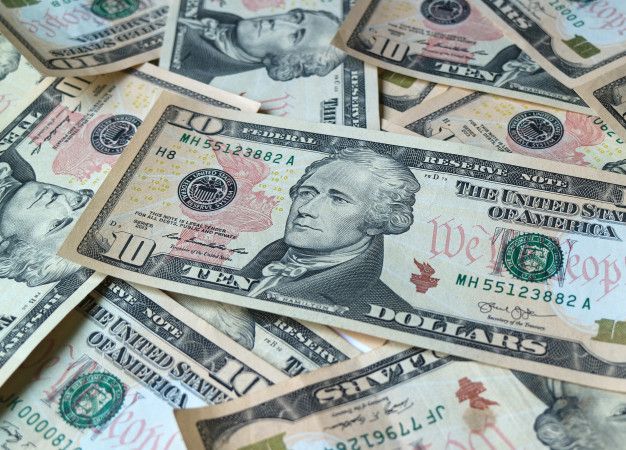The peso closes with an appreciation of 24.6 cents against the dollar

The peso closed the session with an appreciation of 1.21% or 24.6 cents, trading around 20.14 pesos per dollar, with the exchange rate touching a minimum of 20.1161 and a maximum of 20.3937 pesos.
The Mexican peso closed as the second most appreciated currency against the dollar behind the Brazilian real that appreciated 1.61% and followed by the Colombian peso that advanced 1.09%, the Chilean peso with 0.74%, the South African rand with 0.70% and the Canadian dollar with 0.49%, all currencies of countries that produce oil or raw materials.
In general, the appreciation of the peso and these currencies is due to the following factors:
First factor
Optimism has risen about the likely approval of new fiscal stimulus in the United States. According to the leader of the Democratic majority in the Senate, Chuck Schumer, the budget reconciliation process has already begun that would allow the approval of the stimulus plan for 1.9 billion dollars with only 51 votes.
Likewise, according to Schumer, Joe Biden and Janet Yellen have pointed out that a counterproposal of fiscal stimulus from Republicans for $ 618 billion is insufficient, sending the signal that it will not be a priority for Democrats to seek a bipartisan agreement.
Second factor
Energy prices rose, with the WTI advancing 2.32% to $ 54.72 per barrel, mainly due to optimism around the global coronavirus vaccination process, which could increase demand for hydrocarbon during the year.
They have also initiated additional cuts to oil production by Saudi Arabia, which pledged to cut its production by one million barrels a day during February and March.
Third factor
Operations in other financial markets have normalized, mainly the capital market, which last week was shaken by the organized participation of retail investors.
Globally, the main capital market indices closed with gains. In the United States, the S&P 500 advanced 1.39%, the Nasdaq gained 1.56%, while in Mexico the IPC of the Mexican Stock Exchange closed with an advance of 2.01 percent.
The peso
It should be noted that the exchange rate is once again below the key resistance of 20.30 pesos per dollar, after reaching a maximum in the year of 20.5996 pesos.
However, there are still upward risks for the exchange rate, mainly due to an increase in the perception of relative risk in Mexico.
One of the factors that could deteriorate Mexico’s risk perception vis-à-vis investors is the recent energy reform initiative, which seeks to give priority to the CFE over private companies in the dispatch of electricity generated, which could affect institutional confidence of Mexico and investment in the coming years.
In summary, the reform initiative has been interpreted as an effort to return monopoly power to the CFE and reduce powers to autonomous regulatory bodies to transfer them to the Ministry of Energy. The initiative must be discussed and voted in the Chamber of Deputies within 30 days.
IMEF indicators
During the session, relevant economic indicators were also published. The IMEF indicators for the first month of 2021 show two different behaviors. On the one hand, the manufacturing indicator for January stood at 50.23 points, increasing by 1.40 units compared to December and being above the expansion threshold of 50 points, after having remained in a contraction zone for 19 consecutive months (June 2019 as of December 2020).
However, growth was driven by the external sector, as US GDP is expected to return to 2019 levels in mid-2021, generating optimism for Mexican exports.
On the other hand, the IMEF non-manufacturing indicator for December decreased 0.40 points with respect to the previous month, reaching 47.63 units and accumulating 12 months in the contraction zone.
Going forward, it is expected that the tertiary sector continues to show a deterioration, especially given the increase in Covid19 cases that has led 13 states of the republic to return to red traffic lights and given the slow vaccination process that is being observed in the country.
The peso and remittances
For their part, family remittances in 2020 grew 11.44% at an annual rate, ranking as the tenth year with the highest percentage growth since 1996.
The flow of remittances exceeded 40 billion dollars for the first time in a year, reaching 40.607 million dollars. This is equivalent to an increase of 4,167.8 million dollars compared to 2019, being the second largest annual increase in dollars on record.
In December 2020, remittance income reached 3.661 million dollars, registering an annual growth of 17.37% (Vs. 15.60% in November), spinning eight consecutive months in positive territory.
In the session, the euro touched a low of 1.2012 and a high of 1.2088 dollars per euro. Finally, the euro peso touched a minimum of 24.1789 and a maximum of 24.6106 pesos per euro.
At the close, the interbank quotes for sale stood at 20.1390 pesos per dollar, 1.3660 dollars per pound and 1.2038 dollars per euro.
Gabriela Siller; PhD
Director of Economic-Financial Analysis.
Banco BASE
![]()

